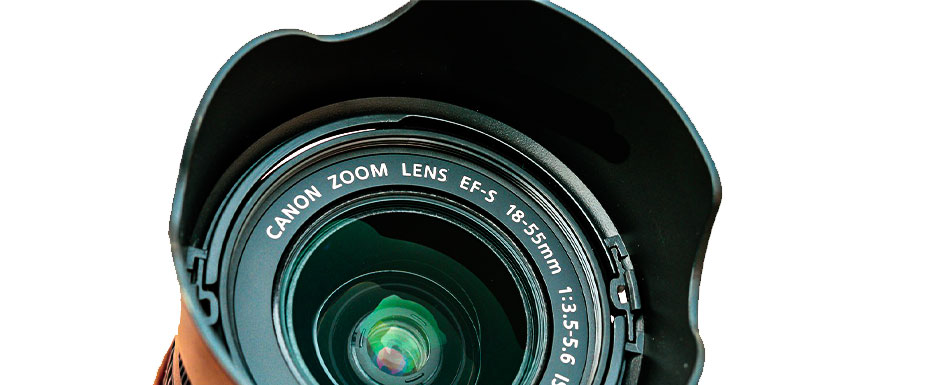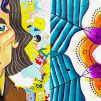
We come across photography every day and are often amazed at how high-quality and stunning the picture is. However, many do not even suspect what kind of work was done and how many frames the photographer went through to capture that one-million-dollar shot.
Moreover, every detail is essential, from the skill of a professional to the equipment used. Let’s talk about one such detail – lens hood, as an indispensable camera component.
What Is a Hood and Why Is It Used?
Perhaps many have noticed how photographers put a special frame on the lens before shooting. This is the hood. It can be of different shapes and sizes, ranging from small and completely inconspicuous to impressive. Sometimes the lens hood seems to be proportional to the camera itself. But the main thing in it is functionality.
The main task of this element is to block out excess light. It should reflect glare and prevent the appearance of the overexposure effect that occurs as a result of sunlight entering the camera lens.
Glare can occur for a number of reasons. It usually happens when shooting in sunny weather, photographing what is happening on a stage lit by spotlights. Another circumstance that can affect the exposure of the frame is a photo session in the dark when using artificial lighting.
In addition to reflecting excess light and glare, the hood performs other functions:
- Protection against mechanical stress;
- Reducing the risk of touching the lens with your fingers;
- Protection against an atmospheric precipitation.

Note: in addition to all the above functions, the security element performs one more: it makes the photo more contrasting.
What Is the Shape of a Hood?
Each design of this element is suitable for a specific lens. The main task of the hood is to fulfill its functions thanks to the front design and avoid the edges from the backside of the image.
The form determines the result of the shooting. It must match the focal length of the lens and camera model.
Petal
Such elements are most often used when using short-throw optics. It is due to the presence of recesses that can expand the space on the sides. The petal hoods on the bottom and top have a relatively wide coverage area. It is important to use the product in question correctly so that the petals do not fall into the picture.
Cylindrical
They are usually used when photographing with long-focus optics. Why? The fact is that the longer the distance of the focal lens, the longer the hood should be. The reverse rule follows the same principle.
Cylindrical elements are simple, but this does not prevent them from performing their basic functions.
There are also pyramidal shapes in the range of blends. But they are rarely used. They are usually worn when shooting panoramas and landscapes.
An alternative to cylindrical accessories is canonical. They are similar in appearance and functionality. The latter only usually do not have petals.
Mount Types
The element can be attached to the camera by means of a thread or a bayonet. In the first case, the product is simply screwed on with a thread and then secured with a special ring called a retaining ring. Most often, threaded elements are used on compact cameras with a non-removable lens.
A bayonet mount is great in that it involves rotation and axial displacement of one part relative to another. To put it as simply as possible, you need to connect the serifs and rotate the element until a specific click.

Some camera models have built-in hoods. When used, the element may appear to be sliding out of the lens. They can have two main provisions: working and transport. Many photographers do not like this solution. But this is “a matter of taste.”
What Are the Protective Elements Made of?
They are made from metal, plastic, or rubber. The most common are plastic products. The increased demand for such blends is justified by their low weight and low cost. The most expensive are metal elements.
Rubber is less common among both – producers and consumers. It is definitely difficult to say for what reason.
When Not to Use a Lens Hood?
There are times when the security element in question is either not needed or simply cannot be used. This is facilitated by the following circumstances:
- Glare and (or) overexposure is a creative idea, the idea of the author of the photograph;
- The product does not fit the focal length, the lens model, or falls into the photograph;
- A different filter is put on the camera (specifically on the lens), and the protective element cannot be attached;
- Flash is in use. In this case, due to the use of a hood, its shadow may fall on the frame;
- Strong gusty winds that create extra vibration can cause blurry photos.
A lens hood is partly an indispensable accessory when you need to get rid of unnecessary glare and excessive light in the frame. But its application is not always relevant. This concerns the creative idea, the discrepancy between the camera model, and more.
Finally, let’s reveal one more piece of good advice: you shouldn’t take shots when the hood is in the “rotated” position. It is technically unprofitable to shoot with an element that is deployed backward. In this position, the accessory will not block the light and protect the lens from external influences. The only time the element should be turned is during transportation or storage.





